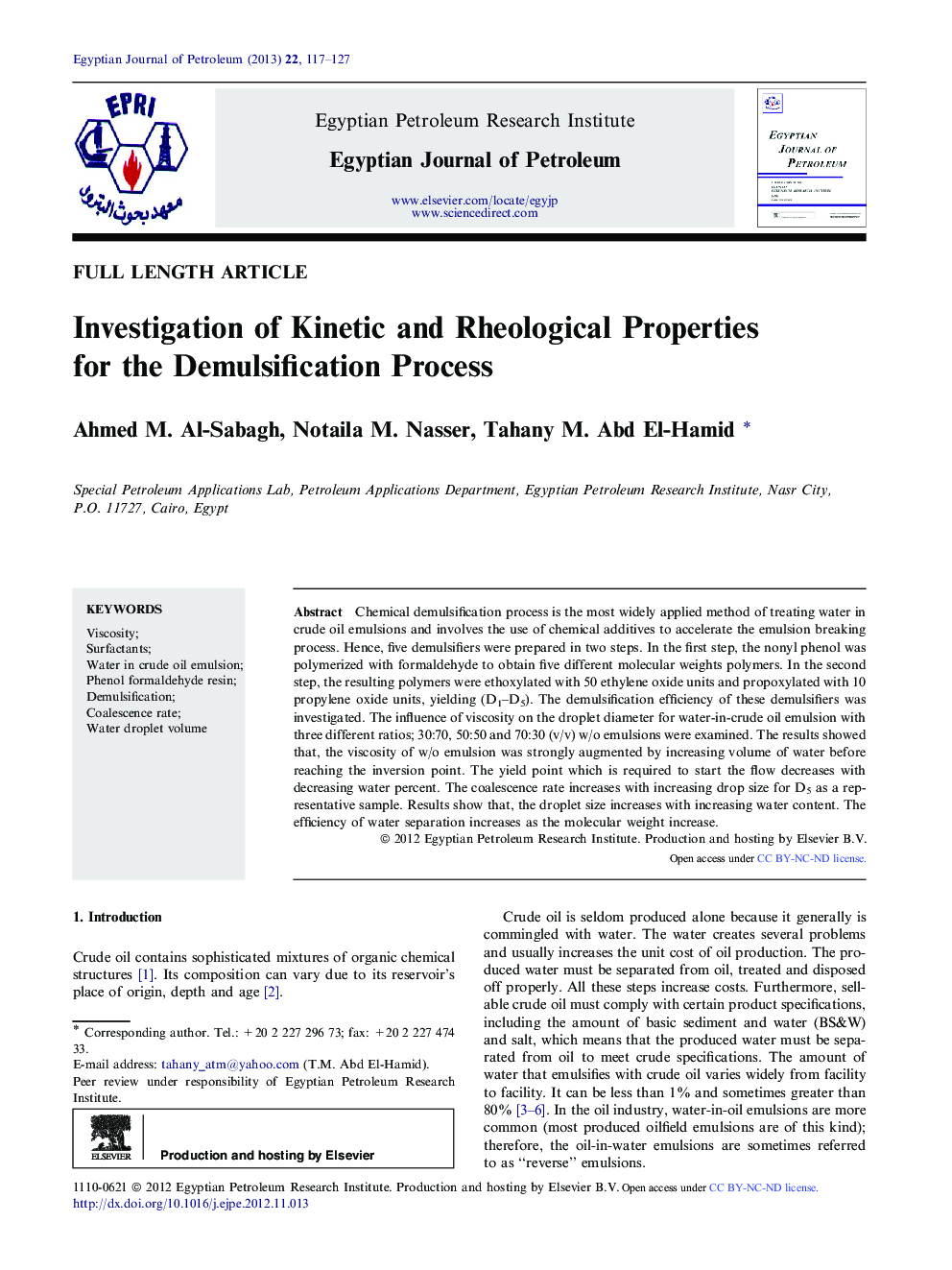| Article ID | Journal | Published Year | Pages | File Type |
|---|---|---|---|---|
| 1756974 | Egyptian Journal of Petroleum | 2013 | 11 Pages |
Chemical demulsification process is the most widely applied method of treating water in crude oil emulsions and involves the use of chemical additives to accelerate the emulsion breaking process. Hence, five demulsifiers were prepared in two steps. In the first step, the nonyl phenol was polymerized with formaldehyde to obtain five different molecular weights polymers. In the second step, the resulting polymers were ethoxylated with 50 ethylene oxide units and propoxylated with 10 propylene oxide units, yielding (D1–D5). The demulsification efficiency of these demulsifiers was investigated. The influence of viscosity on the droplet diameter for water-in-crude oil emulsion with three different ratios; 30:70, 50:50 and 70:30 (v/v) w/o emulsions were examined. The results showed that, the viscosity of w/o emulsion was strongly augmented by increasing volume of water before reaching the inversion point. The yield point which is required to start the flow decreases with decreasing water percent. The coalescence rate increases with increasing drop size for D5 as a representative sample. Results show that, the droplet size increases with increasing water content. The efficiency of water separation increases as the molecular weight increase.
